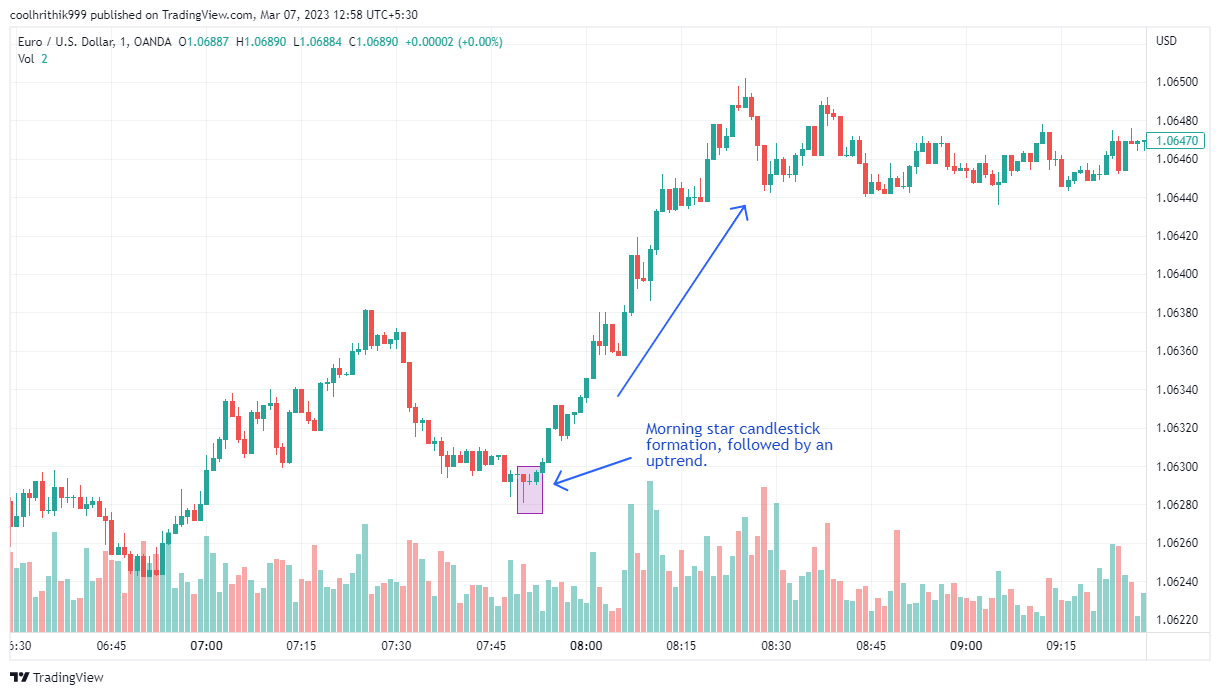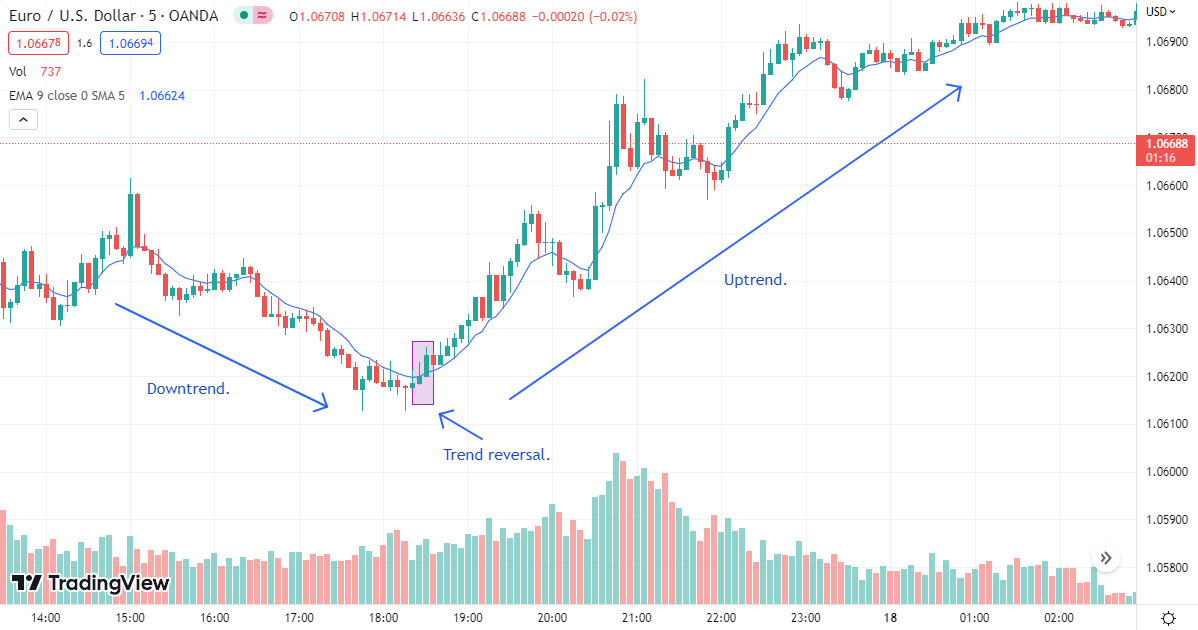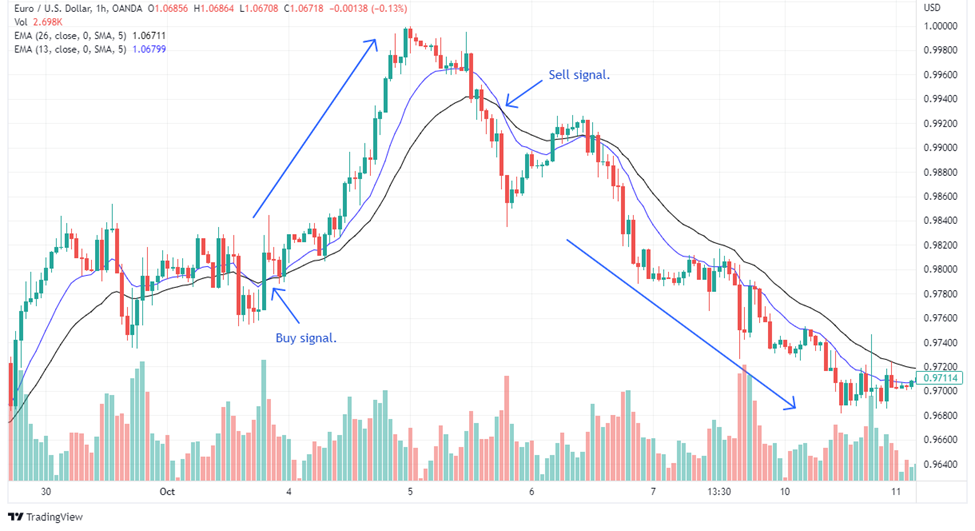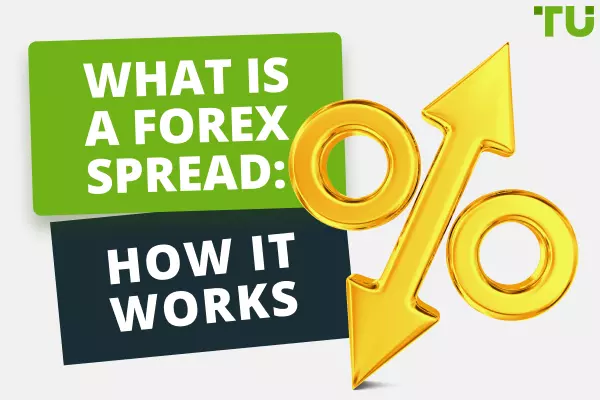Forex Trading Guide For Beginners in Tips and Facts
Forex, short for foreign exchange, is a global market where currencies are traded 24 hours a day, five days a week. While Forex trading can be lucrative, it is important to understand the basics of the market to make informed decisions and avoid potential pitfalls. In this article, the experts at TU will provide you with 15 essential facts about Forex trading and offer tips to help you navigate the market and improve your trading performance.
Trader Union’s experts’ top Forex tips for beginners are:
Create a trading plan and stick to it
Practice trading with a demo account
Use both fundamental and technical analysis
Managing risk by knowing your limits
Keep emotions in check and stick to your plan
Re-evaluate your trading plan regularly
Choose a reputable broker
Patience is key in Forex trading
Top 15 Forex facts to know
The biggest financial market in the world is the Forex market which is currently worth about $2.4 quadrillion.
The Forex market has a daily turnover of $6.6 trillion according to data pulled from sources in 2019.
There are currently 170 different currencies being traded in the Forex market.
85% of traders use MT4, making it the biggest trading platform. MT5 is the second-ranking platform that has 6% of traders using it.
The most popular currency in the Forex market is the US dollar which powers more than 88% of trades worldwide. The Euro is the second-ranking currency, followed by the Japanese Yen, British Pound, Australian Dollar, Canadian Dollar, and Swiss Franc in that order.
The Forex market is always open 24/7 from 5 PM EST on Sunday to 4 PM EST on Friday. But the trading occurs across different marketplaces at different time zones in four major sessions (also called segments).
Currency pairs that get traded the most are classified as Majors. These currency pairs are 7 in number and all have the US dollar as a quote or a base. They include AUD/USD, USD/CAD, NZD/USD, USD/JPY, EUR/USD, GBP/USD, USD/CHF.
More than 67% of the daily trading volume in the Forex market involves the majors.
Currency pairs without the US dollar either as a quote or a base are classified as Minors. Some include EUR/NZD, EUR/GBP, GBP/JPY, GBP/AUD, CAD/JPY, etc.
The number of online Forex traders around the globe is around 13.9 million. 3.1 million traders are based in Europe, with 1.6 million in North America and 4.6 million in Asia.
Every month, 9-20 trades are opened by 41% of traders on average.
14% of traders spend at least 6 hours on Forex trading, while 45% spend anywhere from 1 to 2 hours trading online.
The biggest Forex broker in the world is IC Markets based out of Australia. This broker records $18.9 billion in average trading volume every day.
Of all the Forex traders, only 7% have actively traded for more than 10 years. 23% have traded for 4 to 9 years, 39% have traded for 1 to 3 years, and 31% have traded for less than 12 months.
No single exchange market controls the international Forex trading scene. Rather, the Forex market has brokers and exchanges interacting, and the active trading hours for the markets depend on the time zone. These timezones are always overlapping, so each region has its official trading session as follows: New York from 8 AM EST to 5 PM EST, Tokyo from 7 PM EST to 4 AM EST, Sydney from 4 PM EST to 1 AM EST, and London from 2 AM EST to 11 AM EST.
Top 10 Forex trading terms to learn
Currency
Currency is the money used in circulation, such as banknotes and coins. On the Forex market, the currencies of various countries are traded against each other, with each currency having its own value relative to another currency. The value of a currency is determined by the forces of supply and demand, and traders aim to profit from changes in currency values.
Currency pair
A currency pair is a pairing of two currencies, consisting of a base currency and a quote currency, where the value of the base currency is expressed in terms of the quote currency. Currency pairs are the main instruments traded on the Forex market, and traders buy and sell them in order to profit from changes in exchange rates.
Major pairs
Major pairs are currency pairs that include the US dollar as either the base currency or the quote currency, and one of the other seven major currencies, which are the Euro, Canadian dollar, British pound, Swiss franc, Japanese yen, Australian dollar, and New Zealand dollar. Major pairs are the most heavily traded currency pairs on the Forex market and tend to offer low transaction costs and high liquidity.
Cross pairs and Exotics
Cross pairs are currency pairs that do not involve the US dollar, such as the EUR/GBP or the AUD/JPY. Exotic currency pairs are currency pairs that involve one of the major currencies and a less frequently traded currency, such as the Mexican peso, Turkish lira, or Czech koruna. Exotic currency pairs tend to be more volatile and less liquid than major currency pairs.
Exchange rate
An exchange rate is the value of one currency expressed in terms of another currency. Exchange rates are quoted as bid and ask prices, which are the prices at which traders are willing to buy or sell a currency pair.
Bid/Ask price
The bid price is the price at which traders are willing to buy a currency pair, while the ask price is the price at which traders are willing to sell a currency pair. The difference between the bid and ask prices is known as the bid/ask spread, which represents the cost of trading on the Forex market.
Spread
The spread is the difference between the bid price and the ask price of a currency pair. The spread represents the transaction cost of trading on the Forex market, and traders need to be aware of it as it can eat into their profits.
Pip
A pip is the smallest unit of measure used to express changes in exchange rates. For most currency pairs, one pip represents a change in the fourth decimal place of the exchange rate. For example, if the AUD/JPY pair moves from 1.1000 to 1.1005, this represents a change of 5 pips.
Pipette
A pipette is a fractional pip, representing a tenth of a pip. It is used to measure the spread between bid and ask prices on the Forex market.
Going Long/Short
Going long in Forex trading means buying a currency pair with the expectation that its value will increase. Going short means selling a currency pair with the expectation that its value will decrease. By going long or short, traders aim to profit from changes in exchange rates.
How big is the Forex market? Top Forex figures and factsTop Forex trading tips for beginners
As a beginner in the Forex trading world, it's important to understand that success doesn't come overnight. You need to be patient, dedicated and willing to learn from your mistakes. Here are some expert tips to help you navigate the markets and improve your trading performance:
Educate yourself
Before diving into the world of Forex trading, it's crucial to have a solid understanding of the currency pairs you'll be trading and the factors that can affect their movements. You'll need to learn about economic indicators, central bank policies, geopolitical events, and more.
One helpful way to educate yourself is by reading Forex news and analysis from reputable sources. You can also enroll in Forex courses, attend webinars, and join online trading communities to learn from experienced traders.
Make a plan and stick to it
It is crucial to establish a trading strategy to achieve success in the foreign exchange market. The blueprint should encompass the monetary gains you aim to make, your tolerance towards risk, your preferred approach, and the benchmarks you will employ to assess your performance. Failing to create a plan could increase the likelihood of taking hasty trades based on sentiments rather than sound reasoning.
Once you've created a plan, it's important to stick to it. Every trade you consider should fall within the parameters of your plan. For example, if your plan states that you'll only risk 2% of your account on any one trade, you should never exceed that limit.
Practice with a demo account
Before you start trading with real money, it's a good idea to practice with a demo account. This will allow you to get a feel for how the market works and test your trading plan in real market conditions without risking any of your own capital.
A demo account is also a great way to try out new trading strategies and techniques. For example, you could test out different entry and exit points or experiment with different time frames.
Use both Fundamental and Technical analysis
There are two primary ways to analyze the Forex market: fundamental analysis and technical analysis. Fundamental traders rely on economic news and other financial data to make trading decisions, while technical traders use charts and indicators to identify patterns and trends. In practice, you could use fundamental analysis to identify long-term trends, while using technical analysis to pinpoint entry and exit points.
Know your limits
Managing risk is a crucial element of achieving success in Forex trading. This involves being aware of the amount of risk you are comfortable with taking on each trade, setting your leverage ratio in line with your requirements, and ensuring that you do not put at stake more than you can afford to lose.
Use stop and limit orders
Stop and limit orders are essential tools for managing risk in Forex trading. A stop order will automatically close your position if the market moves against you, helping to limit your losses. A limit order, on the other hand, will automatically close your position if the market moves in your favor, allowing you to lock in profits.
Trailing stops are another useful tool that can help protect your profits. A trailing stop will automatically adjust your stop loss order as the market moves in your favor, allowing you to ride the trend while minimizing your risk.
Keep emotions in check
Emotions can be a trader's worst enemy. Fear and greed can cause traders to make irrational decisions and deviate from their trading plan.
To keep your emotions in check, it's important to stay disciplined and stick to your plan. Don't let a losing trade tempt you into making impulsive decisions in an attempt to recoup your losses. Instead, focus on making small, consistent gains over time.
Re-evaluate your trading plan
As your experience grows, your needs may change. Your financial situation, risk tolerance, or trading goals may evolve over time, so it's important to periodically review your trading plan and adjust it accordingly. For example, you may want to revise your profit targets, modify your risk management strategies, or change the instruments you trade.
Patience
Patience is an essential trait for successful Forex trading. The Forex market can be unpredictable, and it's important to remember that profits won't always come quickly or easily. Trading requires a disciplined approach, and impulsive or emotional decision-making can lead to significant losses.
It's important to have realistic expectations and understand that trading is a long-term game. Developing a profitable strategy takes time, and it's important to be patient as you refine your approach. Avoid the temptation to chase quick profits or jump into trades without proper analysis and planning.
Choose the right trading partner
Finally, choosing the right Forex broker is critical to your success as a trader. You want to select a broker that offers competitive pricing, reliable execution, and prompt customer service. Look for a broker that is regulated by a reputable authority, such as the Financial Conduct Authority (FCA) in the UK, the National Futures Association (NFA) in the US, or the Australian Securities and Investments Commission (ASIC) in Australia.
In addition, consider whether the broker offers a range of trading platforms and tools that suit your needs. For example, you may prefer to use the popular MetaTrader 4 or 5 platforms, or you may want access to advanced charting and technical analysis tools. It's also important to check the broker's fees and commissions, as these can vary widely between providers.
Forex Trading for Dummies Review - Top tips for BeginnersBest Forex strategies for beginners
With so many options available, it can be challenging to determine which strategy is the best fit for you. Here are three popular Forex strategies that beginners can use to get started, as suggested by our experts:
Simple Forex Trading Strategies for BeginnersPrice Action Trading
Price action trading is a strategy that involves analyzing charts and identifying patterns to determine potential price movements. This strategy focuses on understanding the price movements of currency pairs, rather than relying on technical indicators or other tools. Price action traders believe that all relevant market information is reflected in the price movement itself and that by analyzing the price movements, they can make better trading decisions.
Price action traders use various price patterns, such as support and resistance levels, to determine where to enter and exit trades. They also use candlestick patterns and chart patterns to identify potential price movements. Price action trading is widely used because it is simple to learn and can be applied to different timeframes.

Price Action Trading Strategy
Trend Trading Strategy
Trend trading is a strategy that involves identifying the direction of the market trend and placing trades in that direction. Traders who use this strategy believe that markets tend to move in a particular direction over time, and by following the trend, they can increase their chances of success.
To identify a trend, traders use various technical indicators, such as moving averages and trend lines. They enter trades in the direction of the trend and hold them until the trend starts to reverse. Trend trading can be used on different timeframes, from short-term to long-term, depending on the trader's goals and preferences.
For instance, in the following illustration, traders using the trend following strategy would go short during the downtrend, and once they identify the trend reversal, they would close the short position and enter a long position to follow the market trend.

Trend Trading Strategy
Swing Trading Strategy
Swing trading is a technique that involves retaining positions for a period of time ranging from several days to a few weeks with the goal of capitalizing on short-term price fluctuations. This approach is particularly beneficial for those who are unable to devote much time to monitoring market conditions but still want to engage in Forex trading.
Swing traders use technical analysis to identify potential price movements and determine where to enter and exit trades. They aim to capture the "swings" in the market, buying when prices are low and selling when prices are high. Swing trading can be less stressful than other strategies since traders do not have to monitor the markets constantly.

Swing Trading Strategy
Is Forex trading profitable for beginners?
Forex trading can be very profitable for beginners, but it's important to recognize that it also comes with its risks. In fact, statistics show that up to 80% of beginner traders lose money in their first few months of trading. However, there are ways to increase your chances of success and profitability.
First and foremost, it's important to do your homework and choose a reputable broker. Take the time to research and read reviews from other traders before selecting a broker. Look for a broker that is licensed and regulated by a reputable authority.
Once you have chosen a broker, it's important to use a practice account before you start trading with real money. This allows you to get a feel for the market and test your strategies without risking any capital. When you do start trading with real money, start small and use proper money management techniques. This means controlling the amount of leverage you use and setting stop-loss orders to minimize your losses.
It's also important to keep a trading journal to track your trades and analyze your performance. This can help you identify patterns and areas for improvement. Additionally, keep your analysis techniques to a minimum to avoid the well-known phenomenon of “analysis paralysis”. Focus on a few key indicators and use them consistently.
Lastly, it's important to understand the tax implications of Forex trading and treat it as a business. Keep accurate records of your trades and consult with a tax professional to ensure compliance with tax laws.
In conclusion, Forex trading can be profitable for beginners, but it requires discipline, patience, and proper risk management. By doing your research, practicing with a demo account, and using proper money management techniques, you can increase your chances of success and profitability in the Forex market.
Is Forex Trading Profitable? How Much Money Can I Make?Best Forex accounts for beginners
It is essential to choose an account type that suits your trading style, experience level, and budget. Here are some of the best Forex accounts for beginners:
Best Brokerage Accounts for BeginnersDemo accounts
Demo accounts are virtual trading accounts that allow traders to practice trading without risking real money. These accounts are a great way for beginners to get familiar with the trading platform, learn the basics of Forex trading, and test their strategies in a risk-free environment. Demo accounts usually come with virtual funds that you can use to place trades on real market conditions.
Best Free Forex Demo AccountsCent accounts
Cent accounts are trading accounts that allow traders to trade with small amounts of money. This type of account is perfect for beginners who want to start trading with a small capital. With cent accounts, traders can trade with as little as $1 or $10, making it easier to manage risks and learn trading strategies without breaking the bank. These accounts usually have higher leverage, which allows traders to control larger positions with a smaller amount of capital.
Best Forex Cent Account Broker For BeginnersCopy trading accounts
Copy trading is a well-liked aspect in the realm of Forex trading, which enables novices to replicate the transactions executed by seasoned traders. With copy trading accounts, beginners can connect their trading account to the account of a professional trader, and the platform will automatically copy their trades. This feature is perfect for beginners who don't have the time, experience, or knowledge to trade on their own. However, it's important to choose a reputable trader to copy, as not all traders are successful.
Are you interested in copy trading? - Try RoboForexPAMM accounts
PAMM (Percentage Allocation Management Module) accounts are investment accounts that allow traders to invest in a portfolio of other traders' accounts. With PAMM accounts, beginners can invest in a portfolio managed by a professional trader, who will trade on their behalf. This type of account is ideal for beginners who don't have the time or knowledge to trade on their own, but still want to benefit from the Forex market's potential profits. PAMM accounts usually require a higher minimum investment than other types of accounts.
FxPro became the best PAMM broker in 2024Best Forex brokers 2024


FAQ
How to trade Forex successfully for beginners?
To trade Forex successfully, beginners should start by educating themselves about the currency market and different trading strategies. Practicing with a demo account can help them get a feel for real market conditions without risking their own capital. Beginners should also use both fundamental and technical analysis, manage their risk with stop and limit orders, and keep their emotions in check.
What are the basic facts about Forex trading?
Forex trading involves buying and selling currency pairs with the goal of making a profit. The currency market operates 24 hours a day, five days a week, with trading centers located around the world. Forex trading is highly liquid, with trillions of dollars traded daily. Traders can use both fundamental and technical analysis to make trading decisions, and they can take advantage of leverage to increase their exposure to the market.
What is the trick to Forex trading?
There is no one "trick" to Forex trading that guarantees success. However, traders can improve their chances of success by educating themselves about the market, creating a trading plan, and sticking to it. They should use both fundamental and technical analysis, manage their risk with stop and limit orders, and keep their emotions in check. Consistency and discipline are key to successful Forex trading, and traders should be prepared to re-evaluate and adjust their trading plan as needed.
Is Forex trading good for beginners?
Yes, Forex trading can be good for beginners, but it requires education, practice, and discipline. It's important for beginners to take the time to learn the basics of Forex trading and to practice using a demo account before risking real money. Additionally, beginners should develop a trading plan and stick to it, manage their risk effectively, and keep their emotions in check. With the right education, practice, and mindset, Forex trading can be a profitable venture for beginners.
Team that worked on the article
Chinmay Soni is a financial analyst with more than 5 years of experience in working with stocks, Forex, derivatives, and other assets. As a founder of a boutique research firm and an active researcher, he covers various industries and fields, providing insights backed by statistical data. He is also an educator in the field of finance and technology.
As an author for Traders Union, he contributes his deep analytical insights on various topics, taking into account various aspects.
Dr. BJ Johnson is a PhD in English Language and an editor with over 15 years of experience. He earned his degree in English Language in the U.S and the UK. In 2020, Dr. Johnson joined the Traders Union team. Since then, he has created over 100 exclusive articles and edited over 300 articles of other authors.
Mirjan Hipolito is a journalist and news editor at Traders Union. She is an expert crypto writer with five years of experience in the financial markets. Her specialties are daily market news, price predictions, and Initial Coin Offerings (ICO).









